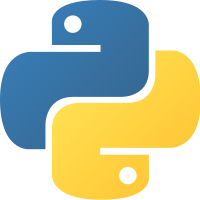Hay muchas maneras de instalar Gaphor. La más sencilla es descargar el
instalador oficial para Windows o macOS. Para Linux puede instalar Gaphor
usando FlatHub. También puede utilizar la herramienta incorporada de Python
pip siempre que tenga instaladas todas las dependencias necesarias.
Si eres desarrollador, puedes encontrar el código fuente en GitHub.
 Windows
Windows
Alternativamente, se puede descargar una versión portátil de Gaphor.
Instalar Gaphor de winget:
winget install gaphor
Para consultar las últimas notas de la versión y otros detalles:
winget show gaphor
 macOS
macOS
Gaphor requiere macOS 10.15 o posterior.
Descarga Gaphor desde un homebrew cask:
brew install --cask gaphor
 Linux
Linux
Flatpak es la forma recomendada de instalar Gaphor en Linux. Si aún no lo tiene instalado, siga las instrucciones para instalar Flatpak.
Para instalar Gaphor manualmente:
flatpak remote-add --user --if-not-exists \
flathub https://dl.flathub.org/repo/flathub.flatpakrepo
flatpak install --user flathub org.gaphor.Gaphor
The Gaphor Arch package can be installed with:
sudo pacman -S gaphor
 Python
Python
Si tiene instalada la última versión estable de Python y las dependencias de Gaphor, también puede instalar Gaphor utilizando una rueda de PyPI.
Si no tienes instalada la última versión estable de Python y las dependencias de Gaphor, sigue las [instrucciones de instalación] del entorno de desarrollo(https://docs.gaphor.org/en/latest), pero no clones el repositorio. Opcionalmente, crea un entorno virtual. A continuación, ejecute lo siguiente:
pip install gaphor
gaphor